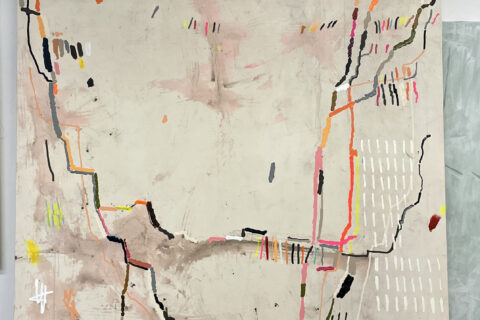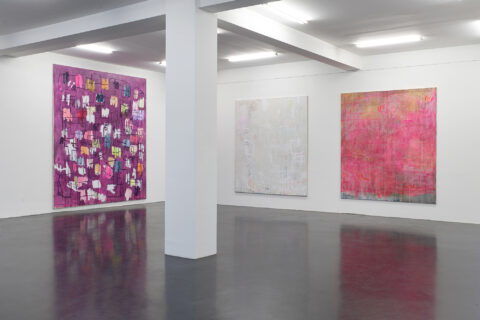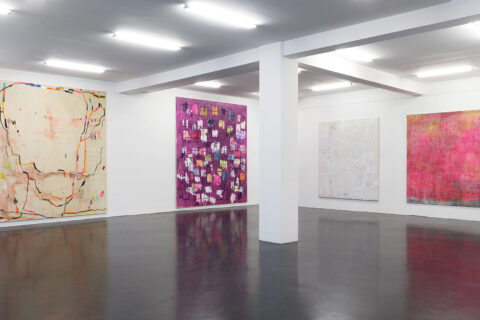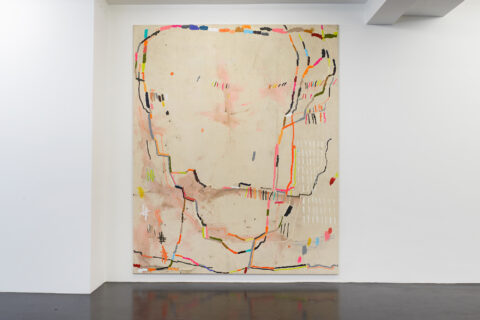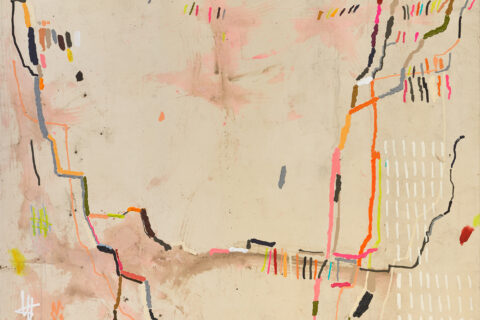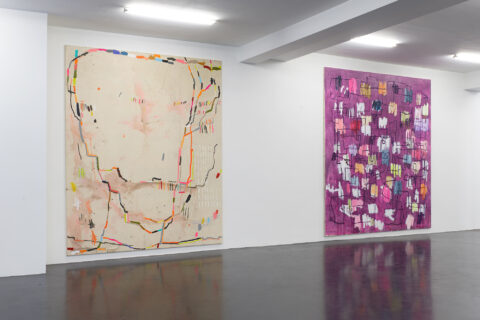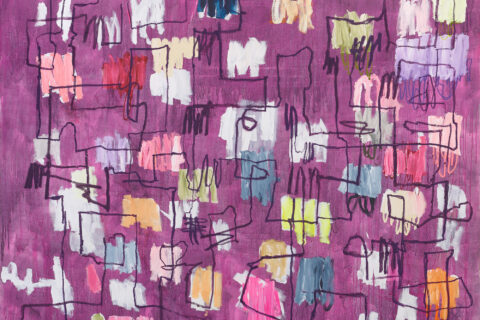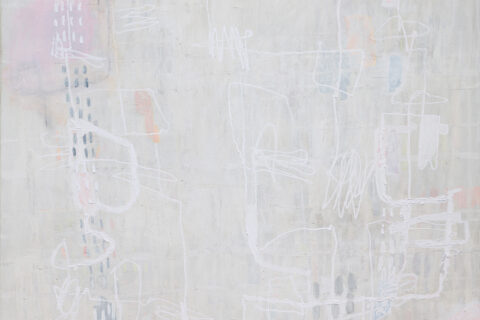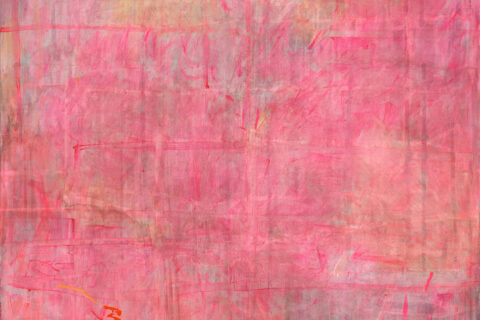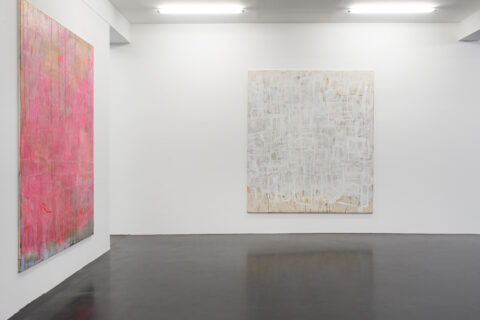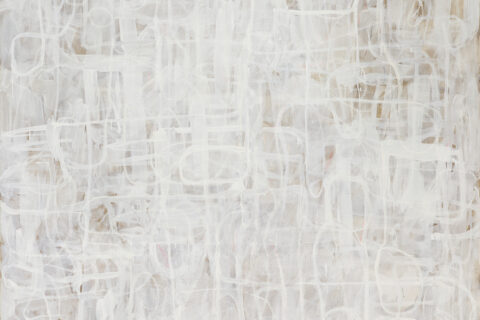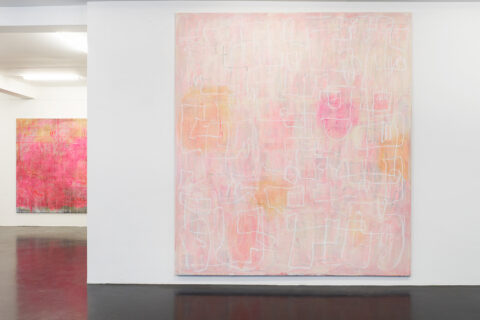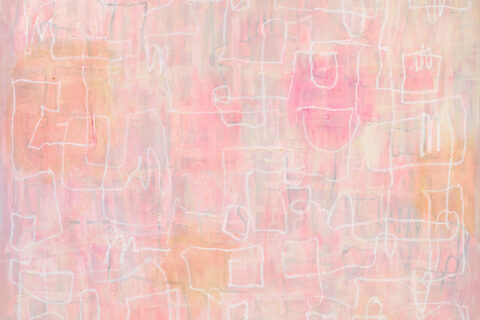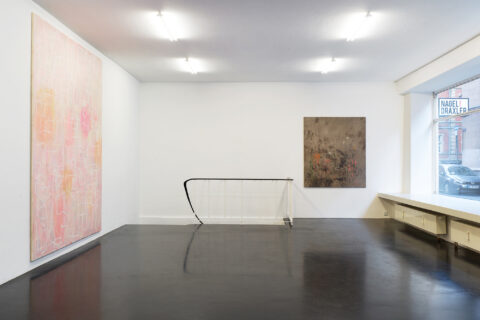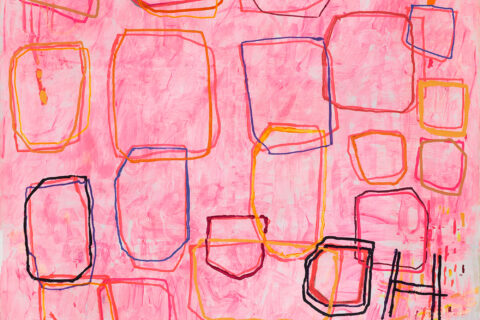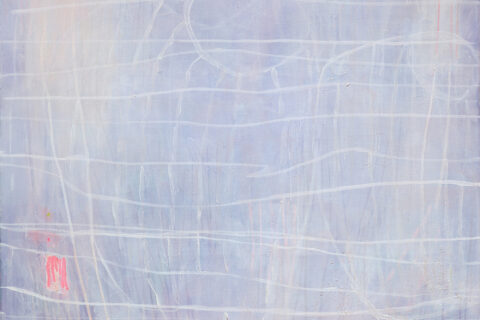Stefan Müller Frighten the Corners
02/09/2022 – 05/11/2022
Galerie Nagel Draxler
Elisenstraße 4–6
50667 Cologne
Opening / Eröffnung:
Freitag, 2. September 2022, 13 - 21 Uhr
Friday, September 2, 2022, 1 – 9 pm
Öffnungszeiten / Opening hours:
Mittwoch - Freitag 11 - 18 Uhr, Samstag 11 - 16 Uhr
Wednesday - Friday 11am - 6pm, Saturday 11am - 4pm
Verlängerte Öffnungszeiten zur DC Open / DC Open hours
Samstag, 3. Sept.: 11–19 Uhr & Sonntag, 4. Sept.: 13–17 Uhr
Saturday, Sept. 3th: 11am–7pm & Sunday, Sept. 4th: 11am–5pm
Press Release
In over two decades of painting, Stefan Müller continues to reinvent the possibilities for abstract and figurative languages inside the medium. He is one of the most significant painters to emerge in Germany after the various swells of bad painting, nihilist formalism, and expanded practices in the 1980s. What separates Müller’s work is the way in which he absorbs this genealogy of German painting – without refusal or outright negation – while simultaneously bringing something entirely new to the painted picture.
To look at these newer works is to be absorbed and lost in the push and pull of his surfaces, where colored elements and paint stick drawings perform double duty as both decoration and foundation – impossibly on top of, and yet submerged by, the planes they create. They act in many ways like the pentimenti of De Kooning, or the arabesques of Pollock, in their refusal to open out into illusionistic depth. The intentionality of these American predecessors – their seriousness and willfulness – is framed by an openness to accident and doubt in Müller’s hands. While this characterizes much of Müller’s earlier investigations, these newer works jump ship in favor of near mural-like scale, and drawing segments that give infinitesimal depth to zones of pure color.
The results of this enlargement of scale do not disrupt the intimacy and smallness of Müller’s treatment of the surface of his paintings, which continue to invite viewers to witness them in the act of creation, a generosity that puts Müller in stark contrast to the hermeticism of his German forebearers. There is an energy and a lightness that Müller preserves in even the largest of his works, charting a path for painting that many had previously deemed closed.
Müller speaks more of musical influence than of the history of painting, but as the reference to American postwar figures signals, he manages to keep his works all over, paintings that function as self-enclosed entities that nevertheless reach beyond their formal limitations – the paintings work from afar and from a close distance. The latter proves almost more confusing than the former, as one searches for the layers beneath, the eye like an archaeologist dusting off a find somewhere in the desert. There is a structure to these works, an architecture that just barely holds together, as if Müller gathered water-logged pieces of lumber after a disastrous flood and tried to make a house out of them. Sure, it stands, but it also feels ready to fall down again, each color and line returning to the ground of the canvas like a piece of wood to the forest floor.
The title of the exhibition, “Frighten the Corners,” refers to many things simultaneously – a text from Müller’s close friend, Mark von Schlegell, as well as to the act of pushing the corners of his canvases to their absolute limit – a playful reversal of the agency of a corner, which is usually what frightens us. The agency is not merely comical, though it no doubt is, but also speaks to the degree to which Müller allows his paintings to speak back to him, a protracted dialogue that all are invited to witness through the dense lattice work of these new pictures. Despite their fullness, Müller’s large-scale paintings remain mysteriously free of gesture and action, as he often prefers to paint directly from a paint source without the fussy interference of the trusted brush. The directness of this application ensures that the results are almost without touch, as if Müller’s paint emerged from the very ground to which it belongs.
Neither a strict colorist nor draftsman, Müller nevertheless stays immersed in the morphing of the two modes of picture making, using the two to weave a tapestry of radical flatness, charged with an energy and exuberance that belongs very much to the medium in which he operates. In the end, there is paint on paint, and as with most things, the closer one gets to concrete expression, the closer one gets to the chaos that quivers beneath the simplest of acts. The wild and random are not forces to be tamed, but they exist as something perceivable, visual, immediate, between the lines. The middle holds, and the corners are very frightened indeed.
Text: Susan Frates

